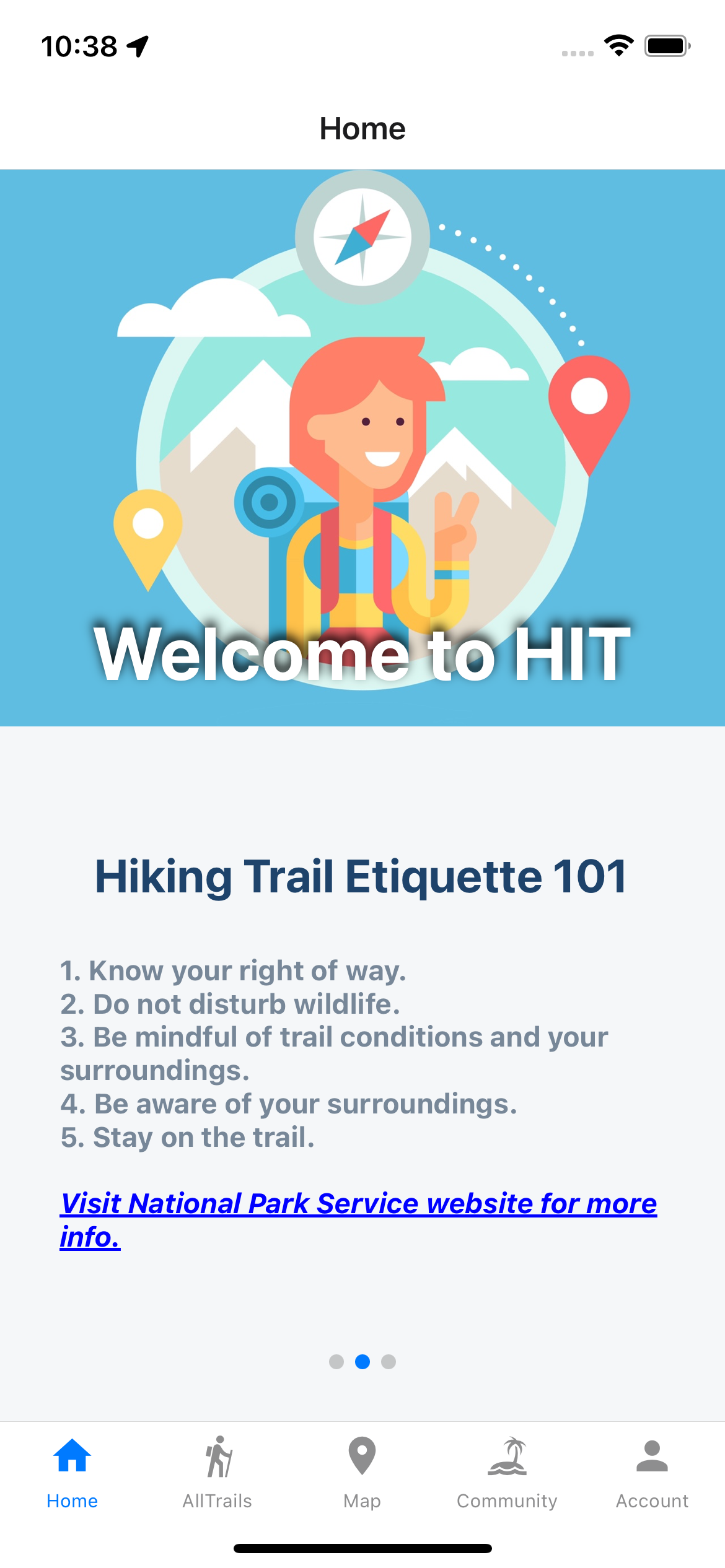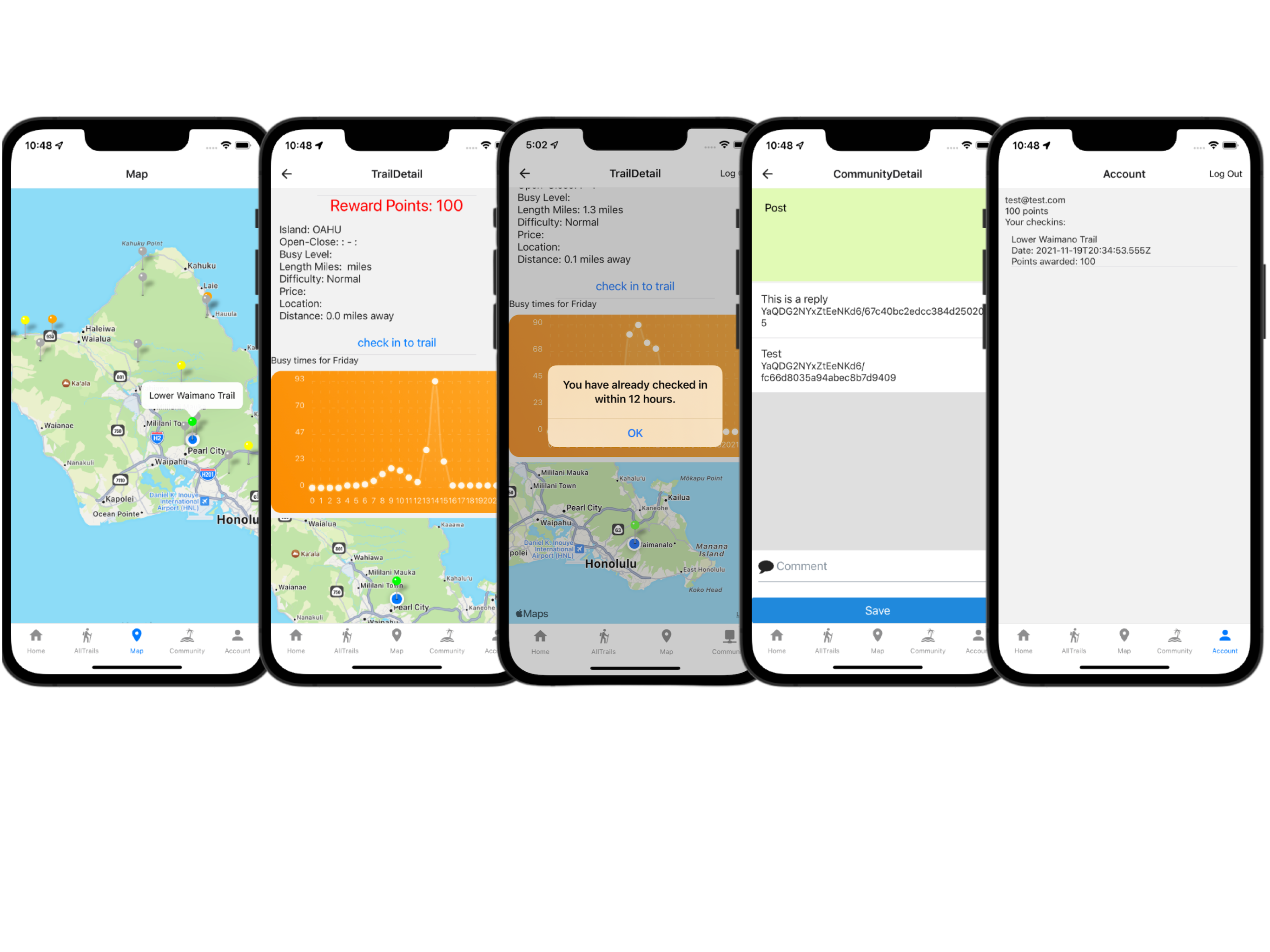HIT (Hawaii Trails)
Overview
 The challenge chosen by our team participating in HACC(Hawaii Annual Code Challenge) was Trail Traffic. In the ICS491 class, both assignment were built using Meteor Framework, so our team decided to gain more experience and take on new challenges at HACC. Therefore, our team developed an application that connects two works; a React Native user app and a Meteor admin app. The server and admin apps used Meteor framework, and the user-visible app used React Native, and the program was written that is compatible with both iOS and Android devices.
The challenge chosen by our team participating in HACC(Hawaii Annual Code Challenge) was Trail Traffic. In the ICS491 class, both assignment were built using Meteor Framework, so our team decided to gain more experience and take on new challenges at HACC. Therefore, our team developed an application that connects two works; a React Native user app and a Meteor admin app. The server and admin apps used Meteor framework, and the user-visible app used React Native, and the program was written that is compatible with both iOS and Android devices.
HIT
 The application HIT developed by our team provides all locations on a trail based on stored trail data and the pin color indicates the expected traffic level for each trail.
The application HIT developed by our team provides all locations on a trail based on stored trail data and the pin color indicates the expected traffic level for each trail.
Users collect points by checking in on the trails they have visited. HIT earns more points when users check in on quieter trails to avoid situations where crowds can become crowded. Therefore, HIT encourages users to find less crowded trails.
By analyzing users’ check-in data and updating congestion forecasts, users can see how busy the trails are at each hour of the day.
HIT goes beyond just a trail application and provides a community page aimed at helping many people form relationships through hiking and develop their experiences through sharing and communication.
Link to GitHub: https://github.com/HACC2021/Hanabata-Code
Devpost: Hanabata Code
Project Contribution
In the Meteor admin app…
- Working with admin list, all trails, add & edit trail pages
- Working with trail information schema
In the React Native user app…
- A component that writes comments on the Community page
- Components that can edit and delete comments written with swipe gestures using SwipeableListView
- Linking data id for users to edit and delete comments and posts they have made
- Intuitive implementation of the All Trails page in card format, where users can view all saved trails
- Overall design (navigating by touching the menu at the bottom of the screen, logo image creation for login & signup, design using react native element library, home page modification)
What I learned
As mentioned above, our team has developed a new challenge that is different from what we have been doing before, connecting the Meteor framework and React Native. React Native at the first time was complicated from setting up the development environment, so I suffered a lot at the beginning of the project. But with the help and feedback of my team leader, I understand how to write programs. Through this project, I experienced React Native for the first time and learned that both web and app development can be done at the same time by connecting with Meteor, and it was a very fun experience.